Sheep’s wool has been used for centuries to make garments, rugs, and tapestries.
There are over 200 recognized sheep breeds worldwide, and there are several wool categories.
The finest wools are generally reserved for fashion fabrics.
Coarser wool types are used for making rugs, tapestries, and other household textiles.
Fleece quality is determined by the fiber diameter, strength, staple length, pigment, and clean fleece yield.
The diameter of sheep wool is measured in microns, and a lower micron count produces a softer finished product.
The staple length of a fleece determines how it is spun into yarn.
Fibers with a longer staple length are easier to process than those with a shorter staple length.
This is because they do not need as many twists to form a strong yarn.
Keep reading for our list of the best sheep breeds for wool production and details about wool from each breed.
Table of Contents
ToggleMerino
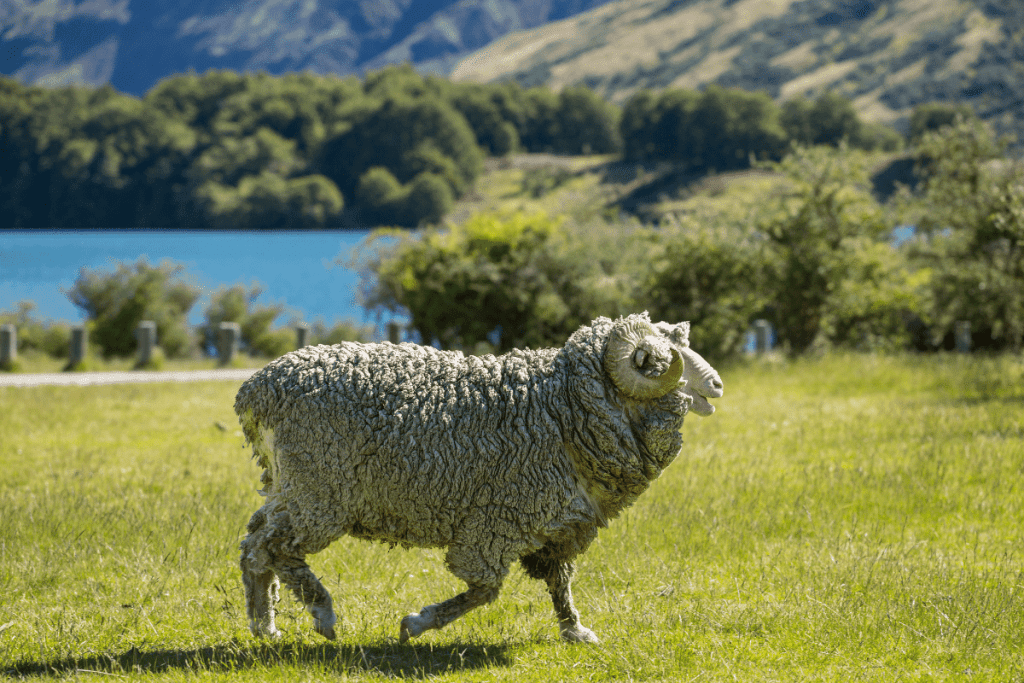
Merino wool has a fineness of 17-22 microns, which produces a very soft yarn commonly used for garments.
Merino wool has a staple length of 3-4″ inches and is commonly used for felting because of its fine texture.
There are several breeds of Merino sheep, including Delaine, Saxon, Boroola, and Peppin.
Merino is high-quality wool and is an excellent choice for garments because it is not as itchy as other fiber types.
While Merino wool will knit into a cozy pair of socks, it is not particularly hard-wearing.
It is more suitable for sweaters, scarves, and hats.
Because of its white wool and ability to absorb dyes well, Merino yarns are available in various colors.
The clean fleece yield of Merino wool is lower than other breeds due to the high amount of lanolin the breed produces.
Romney

Romney fleece has a diameter of 32-39 microns, making it a more common wool for cardigans, jackets, and other garments not worn against the skin.
The staple length of Romney fleece is 5-8″ inches, and it has more crimp than other longwool sheep breeds.
The crimp in Romney fleece gives it more elasticity than other types of fiber, and it is better felting wool than Merino.
Romney fleeces come in black, white, gray, silver, or brown, and the fibers are often undyed to showcase their natural colors and luster.
Naturally-colored wool products are popular with fiber artists who like their projects to have an earthy look.
The durability of Romney wool makes it an excellent choice for outerwear garments, baskets, rugs, and felted items.
Rambouillet

The Rambouillet breed is one of the best-known wool sheep, along with the Merino, Corriedale, and Bluefaced Leicester breeds.
Rambouillet wool has a fineness of 19-23 microns with a more even crimp than Merino.
The fine crimp of Rambouillet fleece produces airy and elastic wool.
Rambouillet is one of the best types of wool for making garments and felting.
The staple length of Rambouillet wool is between 2-4″ inches, and it creates a very soft yarn.
Rambouillet yarn has excellent stitch definition.
This makes it suitable for knitting garments with cables and other intricate patterns.
Rambouillet fleece blends well with other short-staple exotic fibers.
It is commonly used to create baby clothes and sweaters due to its softness and elasticity.
Blue-faced Leicester

The Blue-faced Leicester breed of sheep does not have blue faces, but they get their name from the dark blue skin on their noses.
Their dense wool is usually white, but some Blue-faced Leicester sheep have brown faces.
Blue-faced Leicester fiber has a fineness of 24-28 microns and is silky curly wool.
The staple length of Blue-faced Leicester fleece is 3-6″ inches, making it more durable than Merino wool.
Garments created from Blue-faced Leicester yarn have a delicate drape with a lustrous sheen.
Blue-faced Leicester wool is perfect for knitting hard-wearing items.
Examples include the likes of socks, gloves, sweaters, scarves, and shawls.
Corriedale
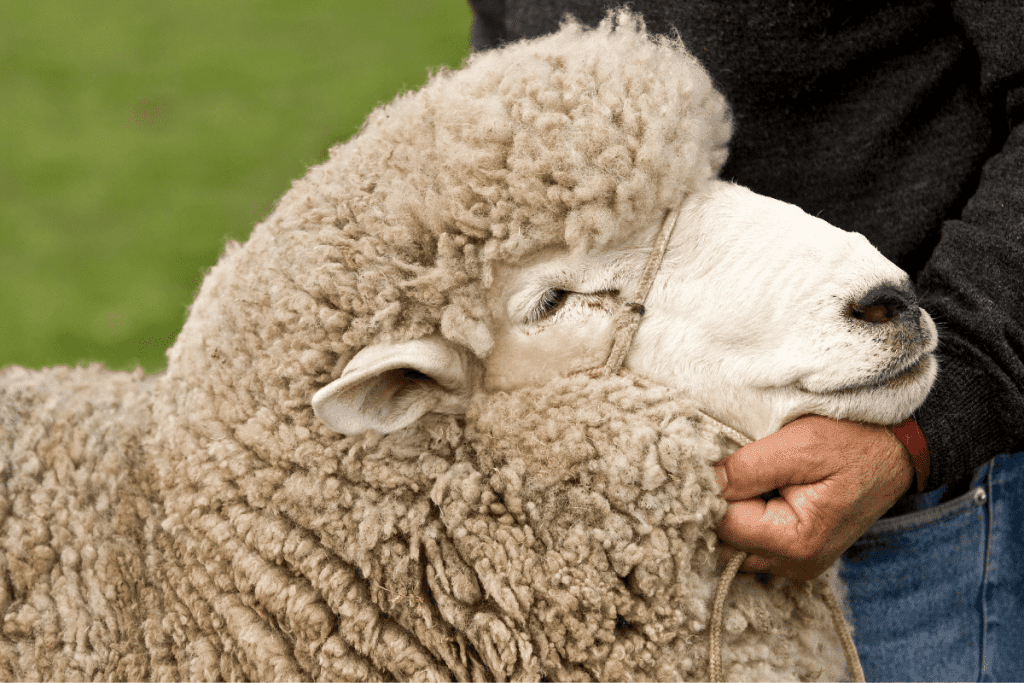
Corriedale sheep are the result of crossing longwool rams with Merino ewes.
This cross-breeding gives Corriedale fleece a soft, crimped texture and is suitable for felting.
The micron count of Corriedale fleece is 24.5-31.5, and it has a staple length ranging from 3.5-6″ inches.
Corriedale sheep may have light or dark wool, often left undyed to show the natural colors.
It is a versatile fiber, popular among knitters, weavers, and hand spinners.
Corriedale fleece may be spun into a fine or medium woolen, worsted, or semi-worsted yarn for excellent elasticity and durability.
Corriedale yarn is most commonly used for blankets, socks, and sweaters.
Targhee
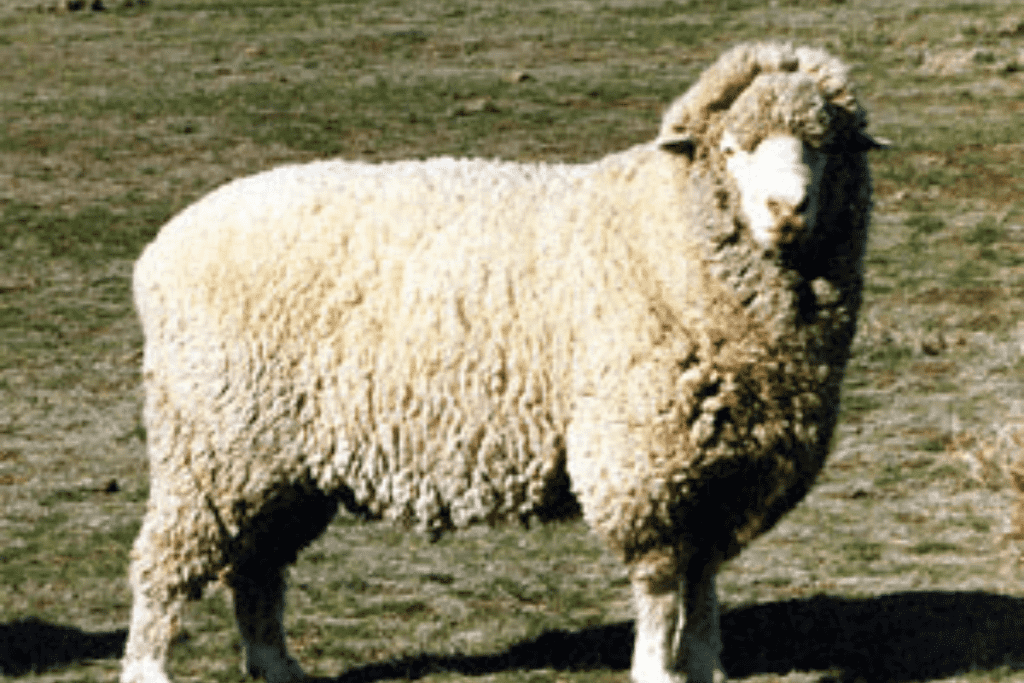
Targhee sheep are dual-purpose animals raised for meat production and high-quality wool.
And they produce a dense fiber with a fineness of 21-25 microns.
Targhee wool has a staple length of 3-5″ inches, and it spins into an elastic yarn with a slight sheen.
This fleece is naturally white and takes dyes very well, so you will likely find this fiber in a rainbow of colors.
The yarn created from Targhee wool is very elastic, making it an excellent choice for socks, sweaters, and other garments worn close to the skin.
Cormo

Cormo wool has an average fineness of 17-23 microns, which creates a soft fiber with a good balance of loft and elasticity.
Cormo wool has a staple length of 2.5-4″ inches and a highly crimped texture.
The downside to wool from Cormo sheep is its difficulty to spin into yarn, which is very challenging for hand spinners.
However, the dense fleece is very uniform along the sheep’s body and produces a yarn with excellent consistency.
The high degree of fiber uniformity makes the Cormo good for commercial wool production.
Lincoln
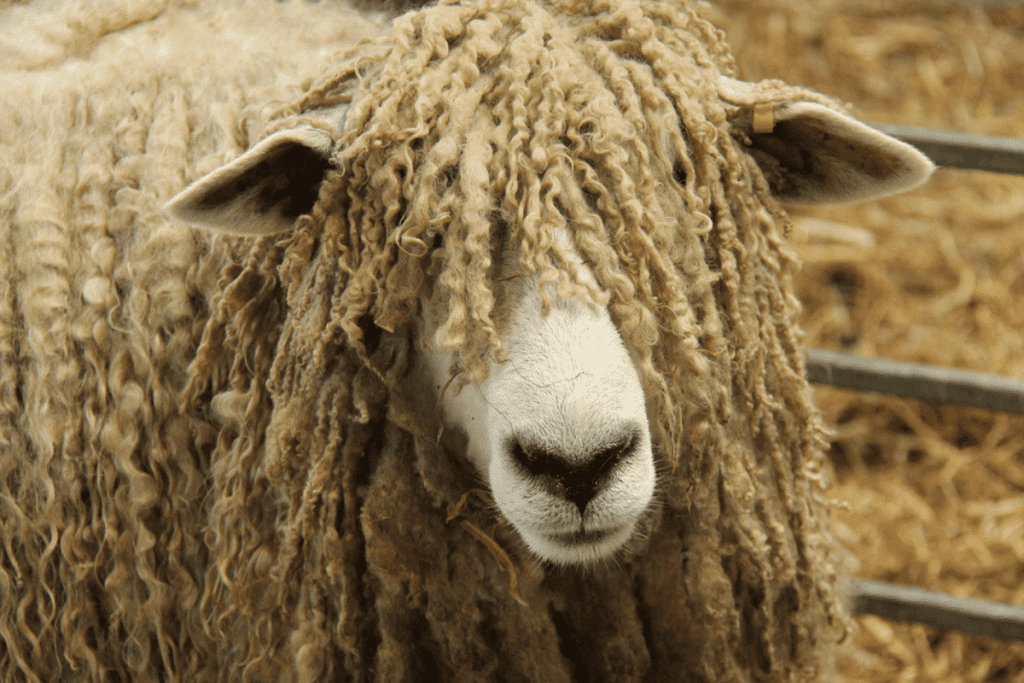
The cormo yarn has a soft feel with a lustrous finish and is commonly used to create sweaters, shawls, scarves, and felted fabrics.
Lincoln sheep are not as popular as other commercial wool breeds, but they are well-known for their long, thick, lustrous fleece.
Lincolns are one of the largest breeds of sheep, and they may have white, black, silver, gray, or charcoal-colored fleece.
The micron count of Lincoln wool is 33.5-41, which gives them a coarser fiber.
The staple length of Lincoln wool is very long at 8-15″ inches.
And it is commonly blended with shorter stapled fibers like mohair to make them stronger.
Since Lincoln wool has such a coarse texture, it is commonly used to weave hard-wearing items such as rugs, tapestries, and upholstery.
Wensleydale
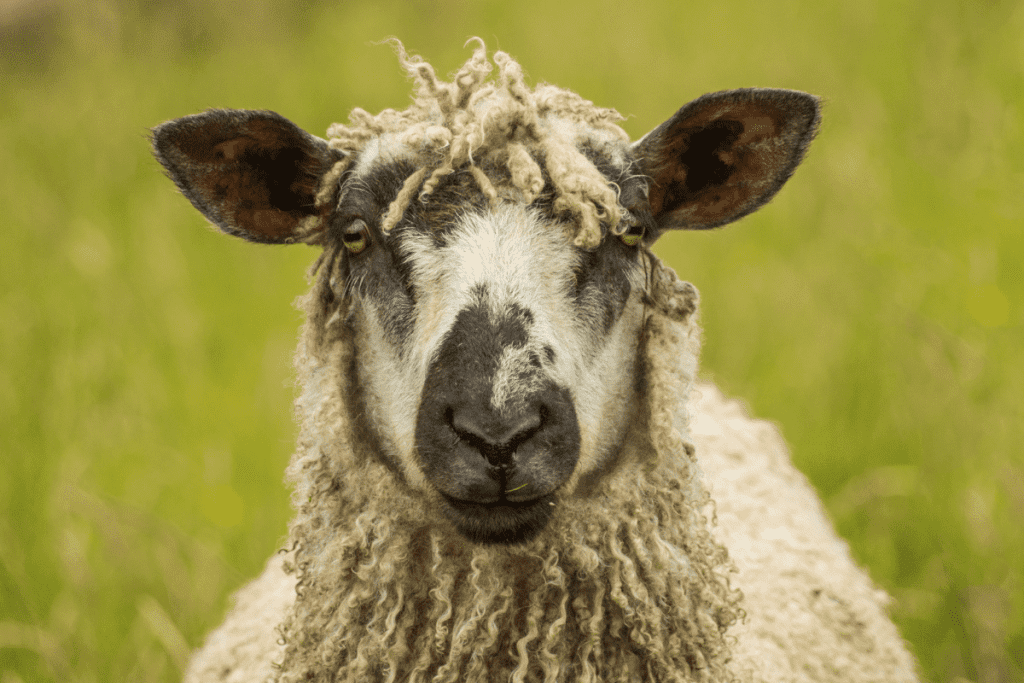
Wensleydale wool has a fineness of 30-36 microns, but despite its micron count, it has a silky feel with a high luster.
Wensleydale sheep are a longwool breed and produce fleece with a staple length between 7-12″ inches.
While Wensleydale is not as soft as other wools, its shine and delicate drape are perfect for an elegant lacy shawl or blending with other fibers.
Wensleydale wool is also used to make rugs and is often woven with cloth for upholstery fabric.
Polwarth
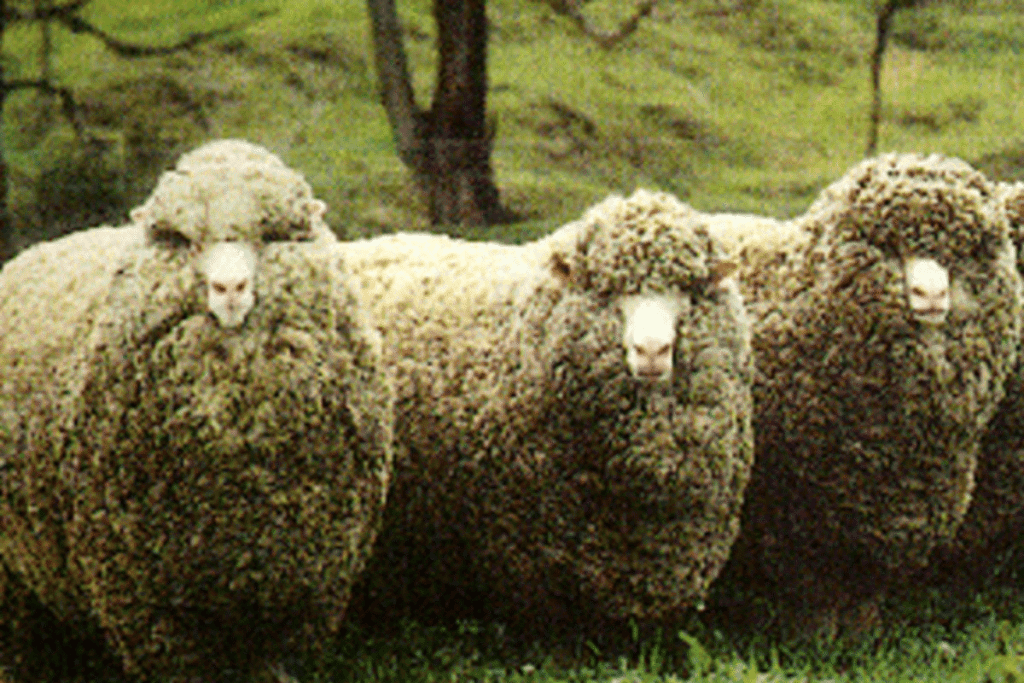
Polwarth sheep are a fine wool breed with a micron count of 22-25.
Polwarth sheep are the result of cross-breeding Lincolns and Merinos, and their soft wool has an average staple length of 4-5.5″ inches.
This mixed wool retains the softness of Merino.
But the longer staple length gives it more elasticity and makes it a better choice for spinning and felting.
Polwarth is versatile wool with a smooth, silky texture, and it also takes dyes very well due to its white fleece color.
For added durability, Polwarth wool is commonly blended with more delicate fibers such as angora, baby alpaca, and mohair.
There are very few Polwarth sheep farmers in the United States, so the fiber is usually sourced from Australia and South America.
Polwarth yarn has excellent stitch definition and is commonly used to knit shawls and sweaters, but it is also durable enough for socks.
Cheviot
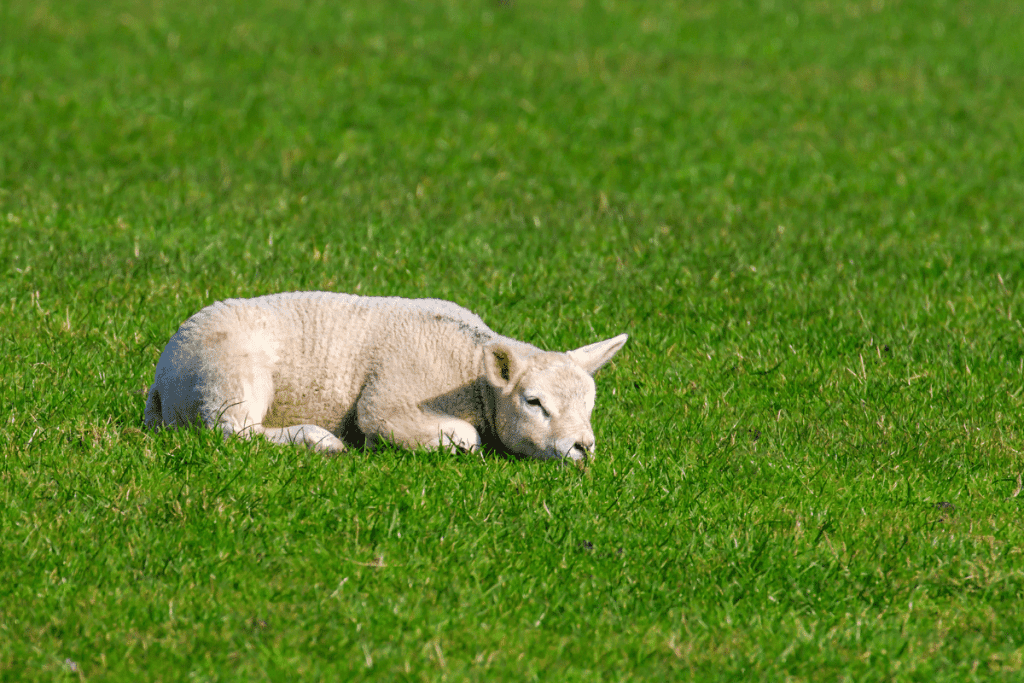
Although the Cheviot’s name sounds French, this sheep breed was actually developed in Scotland.
Its name comes from the Cheviot Hills, a mountain range along the border of Scotland and England.
In addition to its long, dense, and beautiful fleece which covers its entire body (except for its solid white face), the Cheviot is known for being an active, hardy sheep breed.
It tolerates Scotland’s rainy, cold conditions incredibly well.
Plus, its ability to thrive in extreme climates has made it a popular breed in Australia and parts of the United States.
The Cheviot’s curly wool is useful for a variety of textiles and fabrics.
It is commonly woven into jackets, yarn, rugs, and blankets because it is soft enough to be comfortably worn and touched yet also strong and coarse enough to withstand lots of wear and tear.
The wool itself usually has a dense, tightly crimped texture.
Thanks to its hardiness and fairly large size, the Cheviot has also become a popular dual-purpose meat and wool sheep.
They also are fairly low-maintenance in terms of care compared to other sheep breeds with similarly high-quality wool.
Debouillet

Last but not least is the Debouillet, and if its name sounds familiar, it’s because the breed was developed by crossbreeding the Rambouillet with Delaine Merino sheep!
Although its name implies French origins, this breed actually originated in New Mexico in the 1920s.
The breed was designed to withstand hotter, drier climates, though it is quite adaptable and able to thrive in a wide range of climates.
Notably, it has the Rambouillet’s large, sturdy build and combines it with the Delaine Merino’s soft coat, resulting in a highly productive and healthy breed with excellent all-purpose wool.
The Debouillet’s wool is fine like the Delaine Merino’s yet also quite long with a tight curl pattern, making it surprisingly dense, durable, and stretchy.
Despite being somewhat greasy, the wool is generally considered to be fairly easy to work with.
This unique breed’s dense fleece is popular in the American wool industry.
It is most commonly used for clothing like sweaters, scarves, hats, and mittens.
It is soft and fine enough to be worn directly in contact with skin but still durable enough to keep the wearer warm without any itchiness or discomfort.
How useful was this post?
Click on a star to rate it!
We are sorry that this post was not useful for you!
Let us improve this post!
Tell us how we can improve this post?
